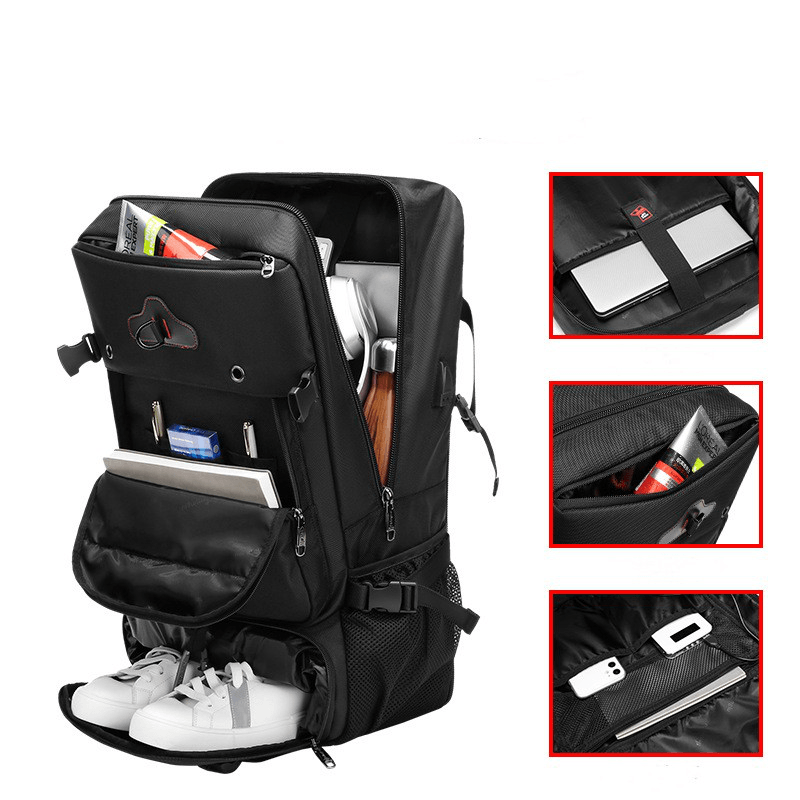According to the different capacities of backpacks, they can generally be divided into three categories: large, medium, and small
A large backpack with a capacity of over 50 liters is suitable for medium to long distance travel and more professional exploration activities. For example, when you are going to Xizang for a long journey or mountain climbing adventure, you should undoubtedly choose a large backpack with a capacity of more than 50 liters. Some short to medium term trips also require a large backpack when camping in the wilderness, because only it can hold the tent, sleeping bag, and sleeping mat you need for camping. Large backpacks can be divided into hiking backpacks and long-distance travel backpacks according to their different uses.
Mountaineering bags are usually thin and long in body, so that they can pass through narrow terrain. The bag is divided into upper and lower layers, separated by a zipper compartment in the middle, making it very convenient to retrieve and store items. The side and top of the backpack can be tied with tents and mats, invisibly increasing the backpack's capacity. There is also an ice pick cover outside the backpack, which can be used to bind ice picks and snow poles. The most noteworthy feature of these backpacks is their back structure, which features a lightweight aluminum alloy frame that supports the body of the backpack. The shape of the back is designed according to ergonomic principles, with a wide and thick shoulder strap that conforms to the physiological curve of the human body in an "S" shape. Additionally, there is a chest strap that prevents the strap from sliding sideways, making the backpacker feel very comfortable. Moreover, these backpacks all come with a sturdy, wide, and comfortable waistband, and the height of the strap can be adjusted. Users can easily adjust the strap to a suitable height according to their body shape. Generally speaking, the bottom of a backpack is located above the buttocks, which can transfer more than half of the backpack's weight to the waist, greatly reducing the burden on the shoulders and reducing shoulder damage caused by long-term weight-bearing.
The body structure of a long-distance travel backpack is similar to that of a mountaineering backpack, except that the bag is wider and equipped with many side pockets for sorting and placing miscellaneous items. The front face of a long-distance travel backpack can usually be fully opened, making it very convenient to retrieve and place items.
The capacity of medium-sized backpacks is generally between 30-50 liters, and these backpacks have a wider range of uses. They are perfect for 2-4 days of wilderness travel, city to city travel, and some long-distance non camping self guided trips. The clothes and daily necessities carried with you can fit well. The styles and types of medium-sized backpacks are more diverse. Some backpacks have added some side pockets, which are more conducive to packing items. The back structure of these backpacks is roughly the same as that of large backpacks.
The capacity of small backpacks is below 30 liters, and these backpacks are generally used in cities. Of course, they are also very suitable for 1-2 day outings.






Leave Your Message